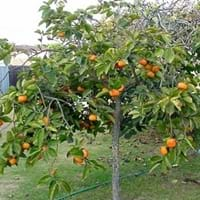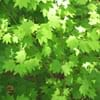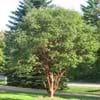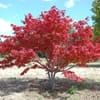Life Span
Perennial
Perennial
Origin
Australia
China, Japan
Types
Not Available
Not Available
Habitat
Scrubs, tussock grasslands, Upland savannas
Subtropical climates, Warmer regions
USDA Hardiness Zone
10-11
6-10
Sunset Zone
8, 9, 12, 13, 14, 15, 16, 17, 18, 19, 20, 21, 22, 23, 24
H1, 6, 7, 8, 9, 12, 14, 15, 16, 18, 19, 20, 21, 22, 23, 24
Habit
Upright/Erect
Pyramidal
Flower Color
Lemon yellow
Light Yellow
Flower Color Modifier
Bicolor
Bicolor
Fruit Color
Gray Green
Orange
Leaf Color in Spring
Blue Green
Green
Leaf Color in Summer
Blue Green
Green
Leaf Color in Fall
Blue Green
Yellow, Burgundy, Orange Red
Leaf Color in Winter
Blue Green
Not Available
Leaf Shape
Long Narrow
Ovate
Plant Season
Spring
Summer, Fall, Winter
Sunlight
Full Sun
Full Sun, Partial Sun
Type of Soil
Loam, Sand
Clay, Loam
The pH of Soil
Acidic, Neutral, Alkaline
Acidic, Neutral
Soil Drainage
Well drained
Well drained
Bloom Time
Spring, Late Winter
Summer
Tolerances
Drought
Not Available
Where to Plant?
Ground
Ground
How to Plant?
Seedlings
Seedlings, Stem Planting
Plant Maintenance
Medium
Medium
Watering Requirements
Do not water excessively
Requires watering in the growing season, Water occasionally
In Summer
Lots of watering
Lots of watering
In Spring
Moderate
Moderate
In Winter
Average Water
Average Water
Soil pH
Acidic, Neutral, Alkaline
Acidic, Neutral
Soil Type
Loam, Sand
Clay, Loam
Soil Drainage Capacity
Well drained
Well drained
Sun Exposure
Full Sun
Full Sun, Partial Sun
Pruning
Remove dead or diseased plant parts, Requires little pruning
Remove damaged leaves, Remove dead branches, Remove dead leaves, Requires very little pruning
Fertilizers
All-Purpose Liquid Fertilizer, No fertilizers needed
General garden fertilizer
Pests and Diseases
Insects, Root rot
Mealybugs
Plant Tolerance
Drought
Not Available
Flowers
Showy
Insignificant
Flower Petal Number
Single
Single
Foliage Texture
Fine
Medium
Foliage Sheen
Matte
Glossy
Self-Sowing
Yes
Not Available
Attracts
Butterflies
Birds
Allergy
Asthma, Eye irritation, Headache, Nose Irritation, Throat itching, Vomiting
no allergic reactions
Aesthetic Uses
Showy Purposes
Not Used For Aesthetic Purpose
Beauty Benefits
Not Available
Not Available
Environmental Uses
Air purification, soil stabilisation
Air purification
Medicinal Uses
Not Available
No Medicinal Use
Part of Plant Used
Flowers, Sap, Seeds
Fruits
Other Uses
Used as a dye, Wood is used fore making tools
Culinary use, Used As Food
Used As Indoor Plant
No
No
Used As Outdoor Plant
Yes
Yes
Garden Design
Shade Trees, Street Trees
Feature Plant, Fruit / Fruit Tree, Topiary / Bonsai / Espalier
Botanical Name
ACACIA aneura
DIOSPYROS kaki 'Fuyu'
Common Name
Mulga, True Mulga
Asian Persimmon, Fuyu Persimmon, Japanese Persimmon, Kaki
In Hindi
Mulga
Fuyu ख़ुरमा
In German
Mulga
Fuyu Persimmon
In French
Mulga
Fuyu Persimmon
In Spanish
Mulga
Fuyu caqui
In Greek
mulga
Fuyu Λωτός
In Portuguese
Mulga
Fuyu Persimmon
In Polish
Mulga
Fuyu Persimmon
In Latin
Mulga
Persimmon Impromptus
Phylum
Magnoliophyta
Tracheophyta
Class
Magnoliopsida
Magnoliopsida
Family
Fabaceae
Ebenaceae
Clade
Angiosperms, Eudicots, Rosids
Angiosperms, Asterids, Eudicots
Tribe
Not Available
Not Available
Subfamily
Not Available
Not Available
Number of Species
Not Available
Not Available
Properties of Mulga Tree and Fuyu Persimmon
Wondering what are the properties of Mulga Tree and Fuyu Persimmon? We provide you with everything About Mulga Tree and Fuyu Persimmon. Mulga Tree doesn't have thorns and Fuyu Persimmon doesn't have thorns. Also Mulga Tree does not have fragrant flowers. Mulga Tree has allergic reactions like Asthma, Eye irritation, Headache, Nose Irritation, Throat itching and Vomiting and Fuyu Persimmon has allergic reactions like Asthma, Eye irritation, Headache, Nose Irritation, Throat itching and Vomiting. Compare all the properties and characteristics of these two plants. Find out which of these plant can be used as indoor plant. If you are interested to decorate your house and garden, find out aesthetic uses, compare them and select the plant which will beautify your surrounding. Along with beautification, try comparing medicinal and edible uses of Mulga Tree and Fuyu Persimmon and you can choose the plant having best and most benefits.
Season and Care of Mulga Tree and Fuyu Persimmon
Season and care of Mulga Tree and Fuyu Persimmon is important to know. While considering everything about Mulga Tree and Fuyu Persimmon Care, growing season is an essential factor. Mulga Tree season is Spring and Fuyu Persimmon season is Spring. The type of soil for Mulga Tree is Loam, Sand and for Fuyu Persimmon is Clay, Loam while the PH of soil for Mulga Tree is Acidic, Neutral, Alkaline and for Fuyu Persimmon is Acidic, Neutral.
Mulga Tree and Fuyu Persimmon Physical Information
Mulga Tree and Fuyu Persimmon physical information is very important for comparison. Mulga Tree height is 550.00 cm and width 370.00 cm whereas Fuyu Persimmon height is 550.00 cm and width 550.00 cm. The color specification of Mulga Tree and Fuyu Persimmon are as follows:
Mulga Tree flower color: Lemon yellow
Mulga Tree leaf color: Blue Green
Fuyu Persimmon flower color: Light Yellow
- Fuyu Persimmon leaf color: Green
Care of Mulga Tree and Fuyu Persimmon
Care of Mulga Tree and Fuyu Persimmon include pruning, fertilizers, watering etc. Mulga Tree pruning is done Remove dead or diseased plant parts and Requires little pruning and Fuyu Persimmon pruning is done Remove damaged leaves, Remove dead branches, Remove dead leaves and Requires very little pruning. In summer Mulga Tree needs Lots of watering and in winter, it needs Average Water. Whereas, in summer Fuyu Persimmon needs Lots of watering and in winter, it needs Average Water.





